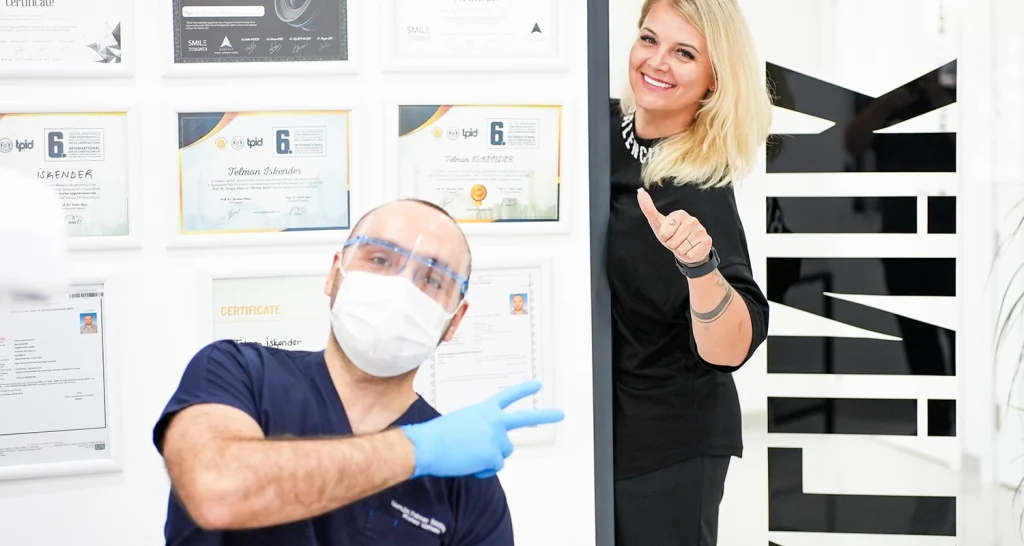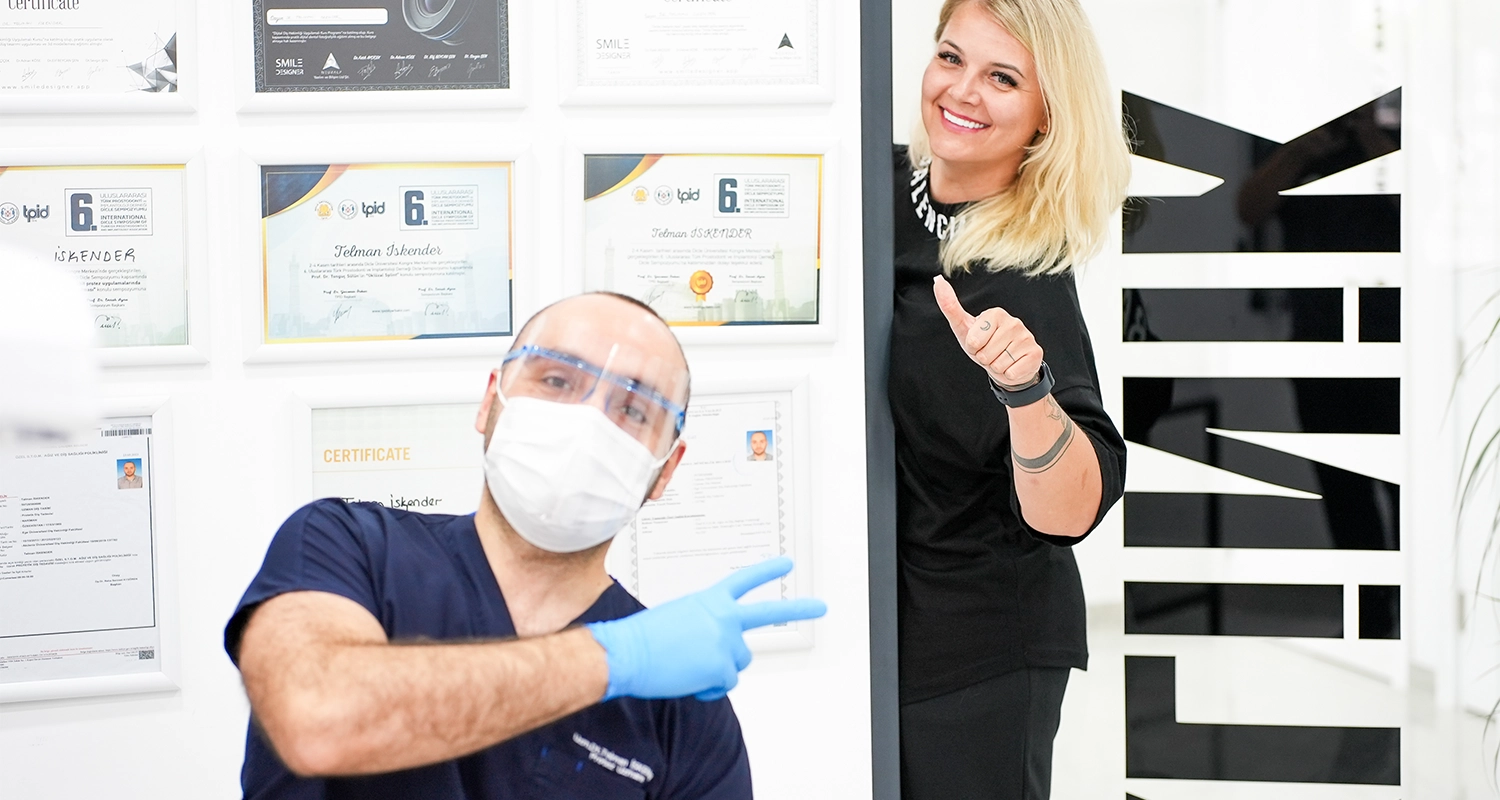Curettage
What is Curettage?
Gum health is an important part of overall oral health. However, over time, plaque and tartar build-up can lead to inflammation and disease of the gums. Curettage is a method used in the diagnosis and treatment of gum diseases. This procedure is performed to clean the gums, eliminate inflammation and straighten the gum pocket.

Gum Diseases and Treatment
Gum disease is characterised by inflammation and damage to the gums. Gingivitis is the mildest form of gum disease and usually presents with symptoms such as bleeding gums, redness and swelling. Periodontitis is a more serious form of gum disease and can cause damage to the gum tissue and bones. Curettage is an effective method in the treatment of serious gum diseases such as periodontitis.
Purpose and Methods of Curettage
The main purpose of curettage is to remove plaque and tartar accumulated in the gums, remove inflamed tissues and straighten the gum pocket. During this procedure, the dentist cleans the gums and tooth roots using a curette, a special instrument. If necessary, gum surgery can be performed to correct the pocket.
Curettage is usually performed under local anaesthesia and the patient does not feel any pain or discomfort. The procedure can usually be completed in one or more sessions, depending on the patient’s condition and needs.
Benefits of Curettage
Curettage is an effective method for maintaining gum health and treating various gum diseases. This procedure has various benefits:
1. Protecting Gum Health
Curettage provides an effective way of diagnosing and treating gum diseases. When applied in the early stages of diseases such as gingivitis or periodontitis, it helps to maintain gum health and prevent its progression. In this way, problems such as inflammation and recession of the gums are prevented and gum health is maintained.
2. Removal of Inflammation
Curettage is effective in removing plaque, tartar and inflamed tissues that accumulate in the gum pocket. These deposits are one of the main causes of gum disease and can lead to serious oral health problems when left untreated. Curettage allows the gums to heal and rebuild in a healthy way.
3. Gum Pocket Correction
Gum pocket refers to the space between the gum and the tooth. In case of progression of gum diseases, these pockets can deepen and create a favourable environment for bacterial accumulation. Curettage restores gum health by cleaning and correcting the gum pocket. This helps prevent more serious complications such as gum recession and tooth loss.
These benefits of curettage play an important role in maintaining gum health and effectively treating various gum diseases.
Curettage Treatment Process
Curettage is an effective method used to diagnose and treat gum diseases. This process consists of several stages and is usually performed by a dentist or periodontist.
1. Preliminary Assessment and Diagnosis
Curettage treatment begins with an assessment of the patient’s oral health status. The dentist or periodontist carefully examines the patient’s gums and gum pockets to determine the type and severity of gum disease present. If necessary, X-ray images can be taken or other diagnostic methods can be used.
2. Curettage Procedure
Curettage is usually performed under local anaesthesia. After anaesthesia is applied, plaque, tartar and inflamed tissues accumulated in the gum pocket are removed using a curette, a special tool placed under the gums. Gum surgery can be performed if necessary to correct gum pockets. The patient does not feel any pain or discomfort during the procedure.
3. Aftercare
After curettage, the dentist or periodontist will give the patient instructions on post-treatment care. These instructions usually include oral hygiene habits such as brushing, flossing, using mouthwash and attending regular dental visits. Following post-treatment care instructions can speed up the healing process and increase the effectiveness of the treatment.
The curettage treatment process provides an effective way to maintain gum health and treat gum diseases. This procedure can help the patient regain gum health and maintain oral health.

For whom is curettage treatment suitable?
Curettage treatment is suitable for treating various gum diseases and maintaining gum health. In particular, curettage treatment may be recommended in the following cases:
1. People at Risk of Gum Diseases
People at risk of gum disease may benefit from curettage treatment. Risk factors for gum disease include poor oral hygiene, smoking, systemic diseases such as diabetes, hormonal changes, genetic factors and certain medications. Those with such risk factors may consider curettage treatment to maintain gum health and treat gum disease.
2. People with Gum Inflammation
Gingivitis or gingivitis is a mild inflammation of the gums and is usually characterised by symptoms such as redness, swelling and bleeding of the gums. People with gingivitis may be suitable candidates for curettage treatment to remove plaque and tartar accumulated in the gums and restore gum health. Gingivitis diagnosed and treated at an early stage can prevent the development of more serious gum diseases.
Curettage treatment can be an effective option for treating gum diseases and maintaining gum health. However, the appropriate treatment options for each patient may differ. Therefore, after a preliminary evaluation and diagnosis with a dentist or periodontist, the most appropriate treatment plan for the patient’s condition should be determined.
Frequently asked questions about curettage
Some of the frequently asked questions about curettage treatment are as follows:
1. Is curettage painful?
Curettage is usually performed under local anaesthesia and the patient does not feel any pain or discomfort. However, slight discomfort or pressure may be felt during the treatment. After the procedure, there may be mild pain or tenderness, but this usually subsides within a few days.
2. Recovery Process after Curettage
The healing process after curettage may vary depending on the intensity of the treatment and the patient’s health status. Generally, there may be mild swelling, bleeding and pain after treatment. Your dentist or periodontist can make recommendations to speed up the healing process. Regular dental hygiene practice and dental check-ups after treatment can support the healing process.
3. How much does curettage cost?
The cost of curettage can vary depending on many factors. These include the complexity of the treatment, the general health of the patient, the techniques used and the geographical location of your clinic. The cost of treatment is usually determined by your dentist or periodontist and is communicated to the patient during treatment planning.
You can contact our dentist for more information about curettage treatment or to get clear information about the cost of treatment.

